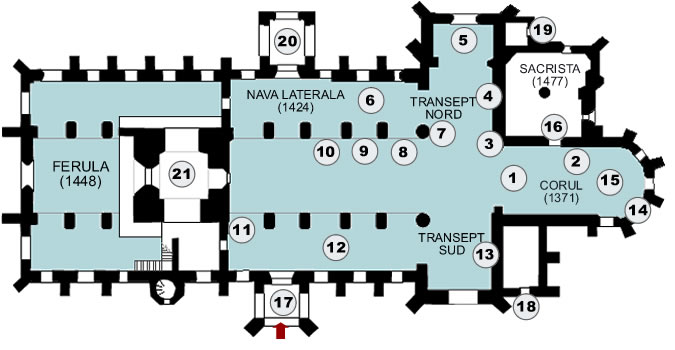Here are other items in the Church inventory:
- A wooden statuary group representing Jesus between two angels (the second half of the 16th century), brought here from the Evangelic Parish in Copşa Mare, where it was displayed in the Ferula;
- The commemorative plate for the heroes of World War I (1928) is found on the wall at the left of the nave
- The stained glass windows in the transept (the beginning of the 20th century);
- The stalls in the naves and the choir (1854/1855);
- The organ, constructed by Wilhelm Sauer’s company (Frankfurt/Oder), was installed in the Church in Sibiu in 1915;
- ‘The painted chronicle’ containing the main events of the city life is situated on the Western wall of the tribune above the Ferula |
|
|

